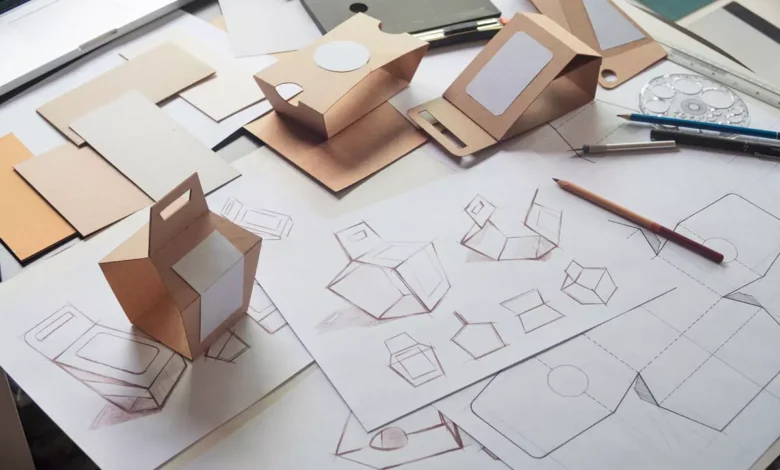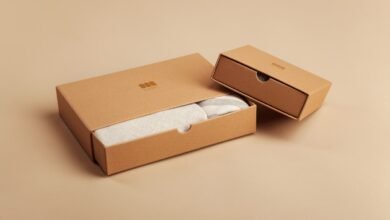Minimalism Is Out—Here’s What’s Replacing It in Packaging Design

Minimalism has had its reign in packaging design for years. Clean lines, neutral colors, and an emphasis on “less is more” were the guiding principles.
But as the design world evolves, minimalism is no longer the dominant force in packaging. Today, consumers are craving more—more color, more personality, more interaction.
If your packaging has embraced a minimalist approach, it may be time to rethink your strategy.
The question is, what’s replacing minimalism?
In this article, we’ll explore the emerging trends in packaging design that are capturing attention, sparking excitement, and—most importantly—driving engagement.
The Rise of Maximalism in Packaging
Bold, Vibrant Colors
One of the most significant shifts away from minimalism is the embrace of maximalism. Bold, vibrant, and unapologetically loud colors are taking over. Packaging is no longer meant to fade into the background; it’s designed to stand out on crowded shelves and in Instagram feeds.
Rather than focusing on a restrained color palette, brands are experimenting with a mix of colors that pop, gradient effects, and even neon hues. These vivid, eye-catching designs are hard to ignore, and they create a memorable first impression.
Why It Works:
- Instant Attention: Bold colors naturally draw the eye and make products pop.
- Emotional Connection: Colors evoke emotions, and brands are using them to create a specific feeling or vibe—whether it’s playful, luxurious, or energetic.
Patterns and Illustrations
Where minimalism favored clean surfaces and empty space, today’s packaging is rich with patterns and illustrations. Designers are using intricate, layered designs that tell a story, invite curiosity, and add an extra layer of personality to the product.
This approach doesn’t just fill empty space—it enhances the brand’s narrative. Whether it’s whimsical floral patterns, abstract shapes, or bold typography, these elements are replacing the simple, functional designs of minimalism with more elaborate, storytelling visuals.
Why It Works:
- Memorability: Busy, playful packaging sticks with consumers.
- Brand Identity: Patterns and illustrations are a fun way to convey a brand’s values and personality, making it stand out in the market.
Packaging as a Canvas: Artistic Expression
Custom Designs and Artist Collaborations
Another exciting development in packaging design is the rise of artist collaborations and custom-designed packaging.
Brands are seeking out artists, illustrators, and designers to create exclusive packaging using vector art that doubles as a work of art. These designs aren’t just functional; they’re pieces of creativity that consumers will want to collect and display.
In this new era, your packaging is more than just a way to protect your product—it’s a canvas for artistic expression. This shift is about creating a visually immersive experience where the packaging becomes part of the overall product story.
Why It Works:
- Collectability: Packaging that feels like art can encourage repeat customers and brand loyalty.
- Premium Appeal: Artist collaborations often feel exclusive and elevate the perception of the brand.
Handcrafted and Textural Designs
Alongside bold graphics, textured packaging is making a comeback. From embossed logos to raised patterns, these tactile elements invite the consumer to touch and engage with the product.
Textural packaging is no longer just about utility; it’s about creating a deeper connection through the senses.
Whether it’s a textured paper or a metallic foil finish, the feel of the packaging can significantly influence the consumer’s perception of quality. It gives the product a premium, artisanal feel and is a great way to differentiate your brand from mass-produced items.
Why It Works:
- Sensory Experience: The tactile element encourages a deeper connection with the product.
- High-Quality Perception: Consumers often associate textured packaging with higher-end or handmade products.
Sustainability Meets Creativity
Eco-Friendly Innovation
While bold, intricate designs and vibrant colors are making waves, they don’t necessarily mean sacrificing sustainability. In fact, today’s packaging designers are blending creativity with eco-consciousness—proving that sustainable packaging doesn’t have to be boring or minimalistic.
Brands are using recycled materials, biodegradable inks, and innovative structures to reduce environmental impact while still delivering striking, creative designs. This fusion of eco-friendliness and creativity is leading to packaging that is both responsible and visually exciting.
Why It Works:
- Conscious Consumers: Sustainability is top of mind for many consumers, especially younger generations.
- Brand Responsibility: Using eco-friendly materials communicates that your brand cares about the environment, aligning with consumer values.
Custom Branded Tissue Paper and Foil Seals
Custom tissue paper and foil seals are becoming integral parts of the new wave of creative packaging. These finishing touches can elevate a package from simple to stunning, adding an extra layer of luxury and exclusivity.
Custom tissue paper can be printed with unique designs, logos, or patterns that add an element of surprise when a customer opens the box. It’s not just about protecting the product—it’s about creating a memorable unboxing experience.
Foil seals are another example of how packaging can blend creativity with luxury. Whether used to seal a box or add a seasonal blurb to a 7-Mil Mylar pouch, these shiny, reflective elements create a sense of exclusivity and attention to detail that appeals to consumers who want their purchases to feel special.
Why It Works:
- Memorable Unboxing: Tissue paper and foil seals create a luxurious, tactile experience that’s perfect for social media sharing.
- Customization: These small touches allow brands to personalize their packaging, creating a stronger connection with customers.
The Future of Packaging Design: Personalization and Storytelling
Packaging That Tells a Story
The future of packaging is all about personalization and storytelling. Consumers are looking for products that reflect their values, tell a story, and make them feel personally connected to the brand.
By incorporating custom elements like personalized messages, unique designs, or limited-edition releases, brands can foster deeper connections with their customers. Packaging should reflect the brand’s journey, its values, and what it stands for—making it much more than just a vessel for a product.
Why It Works:
- Emotional Engagement: Customers connect more deeply with brands that tell a compelling story.
- Increased Loyalty: Personalized packaging makes consumers feel special and valued.
Embrace the Change
If your brand is still holding on to minimalist packaging, it’s time to rethink your approach. The future of packaging design is all about boldness, creativity, and interaction.
Maximalism, artistic expression, eco-conscious materials, and personalized touches are all helping businesses create memorable, viral experiences that customers love to share.
The shift away from minimalism is not just about looking different—it’s about creating an experience that connects with your audience on a deeper level. Whether through textured finishes, bold patterns, or sustainable choices, today’s packaging is all about making an impact.
So, ask yourself: What story does your packaging tell? What emotions does it evoke? In a world where consumers demand more, your packaging needs to reflect that. The era of minimalism has passed—embrace the new age of creativity and personalization in packaging design.





